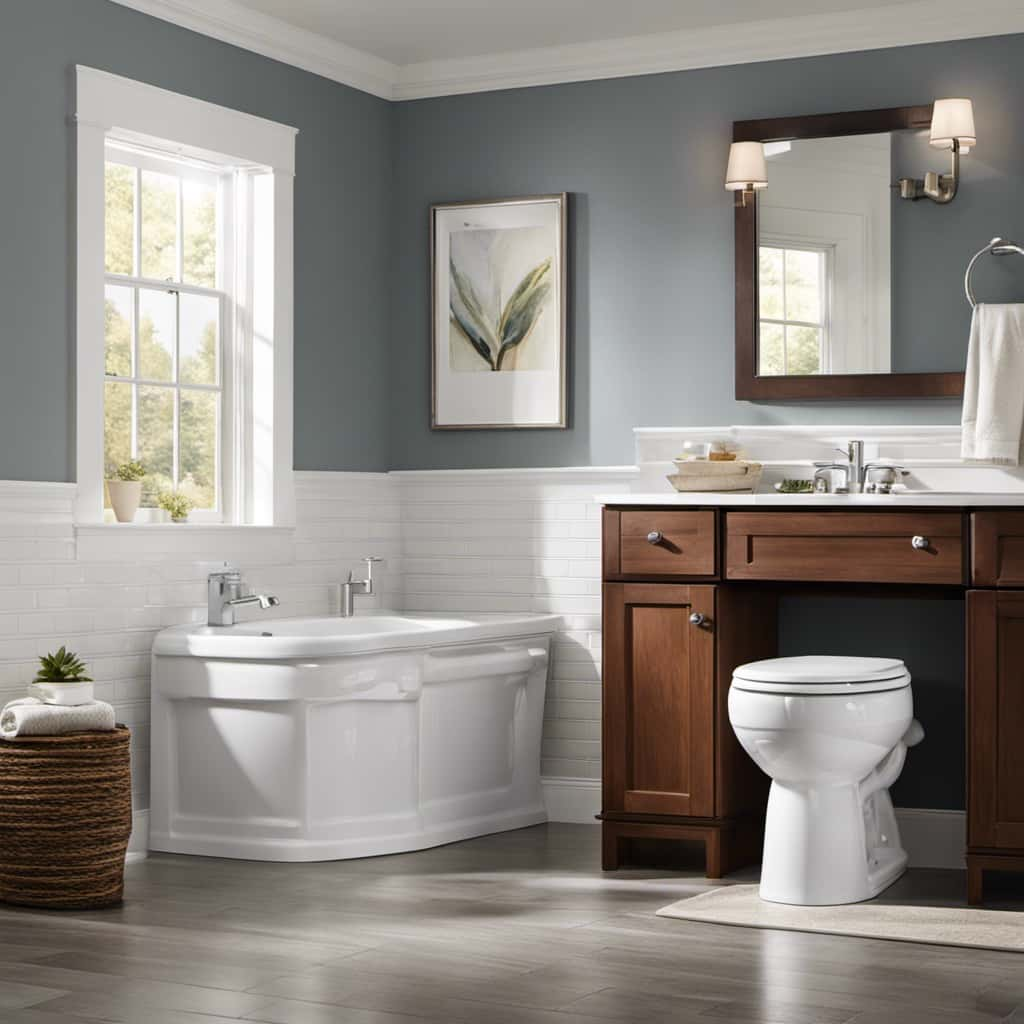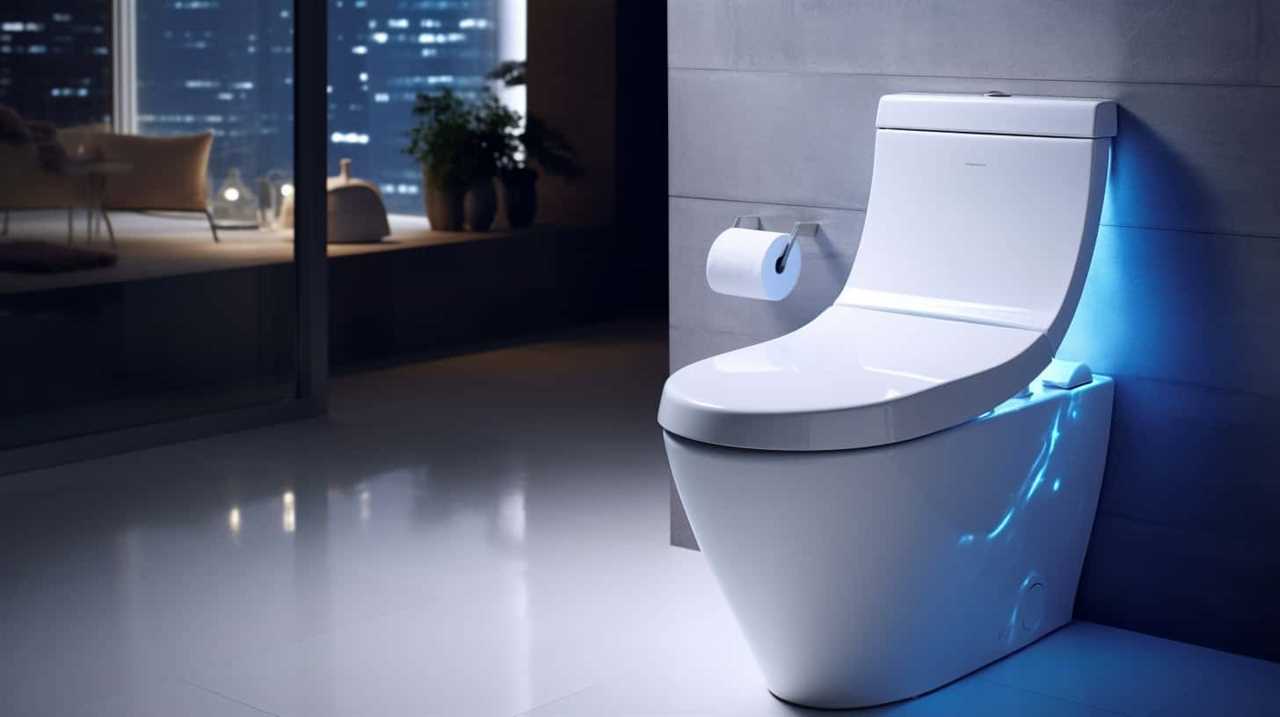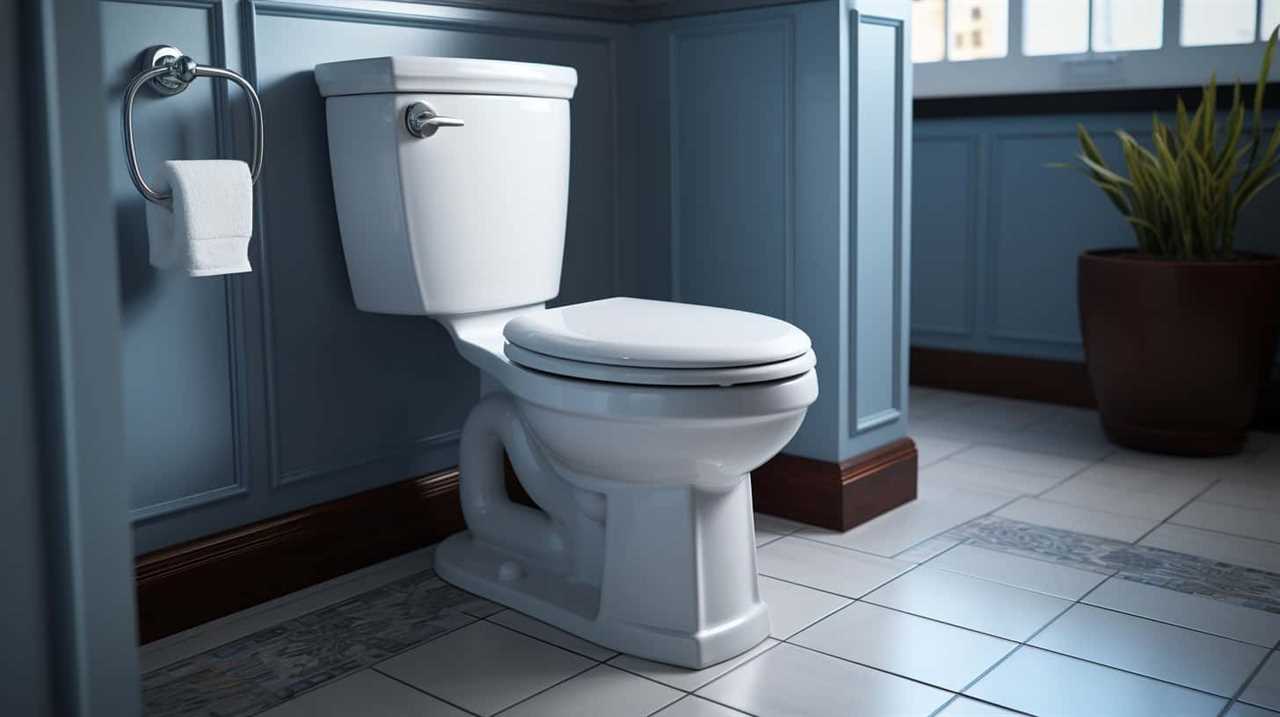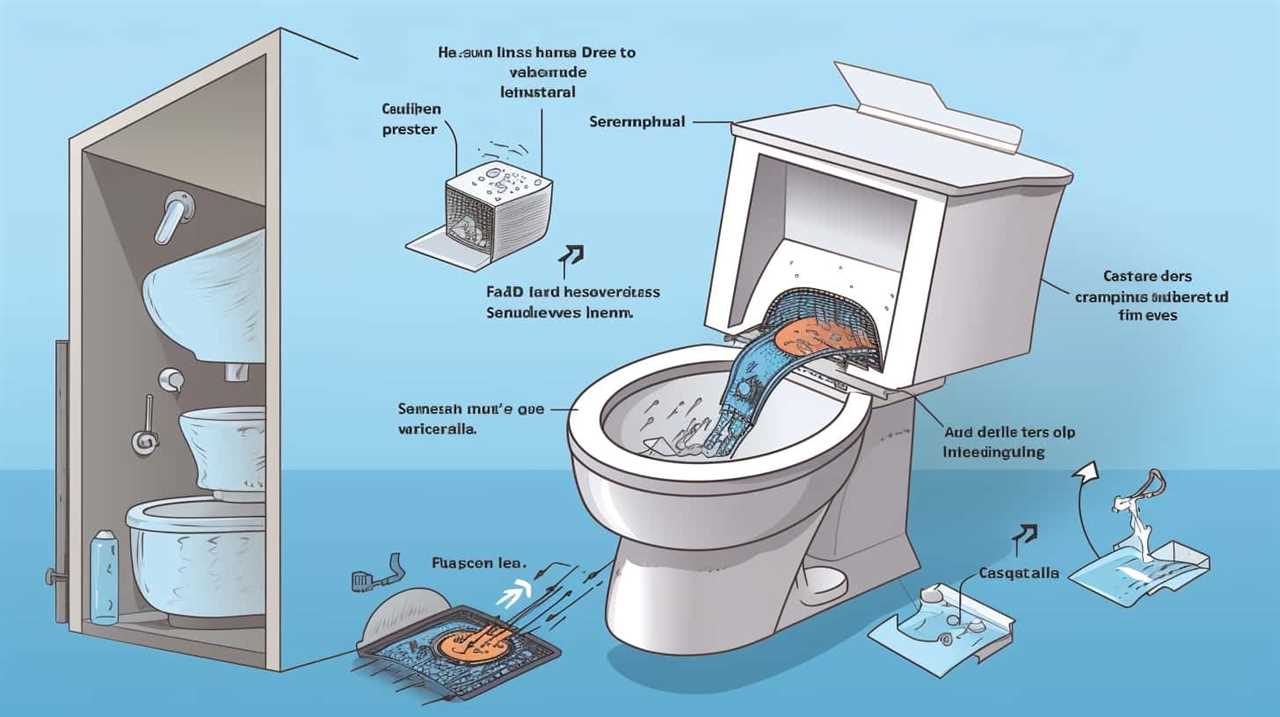Have you ever wondered about the inner workings of a toilet flush mechanism? Allow us to shed some light on the subject.
In this article, we will delve into the intricate inner components that make it all happen. From the flush valve’s crucial role in flushing to the fill valve’s function in refilling the tank, we’ll leave no stone unturned.
And let’s not forget about the flapper’s control over the flush and the trip lever’s involvement.
Get ready to master the art of understanding toilet mechanics.

Key Takeaways
- The toilet flush mechanism consists of components such as the flush handle or button, flush valve, fill valve, overflow tube, and flapper or flush ball.
- The flushing process involves lifting the flush valve, allowing water to rush into the bowl and create a siphon effect to remove waste. The flapper or flush ball closes the flush valve once the tank is empty, and the fill valve refills the tank.
- There are different types of toilet flush mechanisms, including gravity flush, pressure-assisted flush, dual flush, and flushometer valve.
- Common issues with toilet flush mechanisms include phantom flushing, weak flush, constant running, clogs, and leaks. Regular maintenance and troubleshooting are necessary to prevent these problems and ensure proper flushing.
Inner Components of a Toilet Flush Mechanism
We’ll now explore the inner components that make up a toilet flush mechanism. Understanding these flushing mechanism components is crucial to comprehending how a toilet flush mechanism functions. The main components include the flush handle, the lift arm, the chain or lift wire, the flapper, and the fill valve.
The flush handle, located on the front of the toilet tank, is the starting point of the flushing process. When the handle is pressed, it activates the lift arm, which is connected to the chain or lift wire. This chain or wire lifts the flapper, a rubber valve located at the bottom of the tank, allowing water to rush into the bowl. Once the bowl is emptied, the flapper closes, and the fill valve refills the tank.
Understanding the inner workings of these components is essential for troubleshooting and maintaining a properly functioning toilet flush mechanism. Now, let’s delve into the role of the flush valve in toilet flushing.
The Role of the Flush Valve in Toilet Flushing
To understand how a toilet flush mechanism works, let’s discuss the important role played by the flush valve in the process. The flush valve is a crucial component that allows water to rapidly flow into the toilet bowl, creating the force needed to remove waste.

Here are four key points to help you understand the flush valve’s role in toilet flushing:
- Seal: The flush valve is responsible for sealing the opening between the toilet tank and the bowl, ensuring that water remains in the tank until the flush is initiated.
- Release: When the flush lever is pressed, the flush valve opens, allowing water to rush into the bowl.
- Force: The rapid influx of water creates a powerful surge that pushes waste down the drain.
- Maintenance and Troubleshooting: Regular maintenance of the flush valve, such as cleaning or replacing worn-out parts, can help prevent issues like leaks or incomplete flushing.
Now that we’ve covered the flush valve, let’s move on to understanding the function of the fill valve.
Understanding the Function of the Fill Valve
Now, let’s delve into the function of the fill valve and its crucial role in the toilet flushing process.
The fill valve is responsible for refilling the toilet tank with water after a flush. It controls the water level inside the tank, ensuring it’s ready for the next flush. There are different types of fill valves available, including the ballcock valve and the float valve. The ballcock valve uses a ball float attached to an arm to regulate water flow, while the float valve uses a float that rises and falls with the water level.

To help you troubleshoot any issues with your fill valve, here are some tips:
- Check for leaks or loose connections around the fill valve.
- Ensure the water supply valve is fully open.
- Clean or replace the fill valve if it’s clogged or malfunctioning.
- Adjust the water level by adjusting the float or the arm of the fill valve.
How the Flapper Controls the Flush
Moving on to how the flapper controls the flush, it plays a crucial role in the toilet flushing mechanism. Here’s how it works:
- Closure: When the flush lever is pressed, it lifts the flapper, allowing water to flow from the tank to the bowl.
- Water Flow Control: As the water flows into the bowl, the flapper remains open, allowing a controlled amount of water to pass through.
- Seal Formation: Once the tank is empty, the flapper drops back into place, sealing the opening between the tank and the bowl.
- Preventing Water Loss: The flapper’s seal prevents any water from leaking out of the tank, ensuring that the tank refills properly for the next flush.
The flapper mechanism and its role in water flow control are fundamental to the efficient functioning of a toilet flush. Understanding its operation allows for effective troubleshooting and maintenance of the toilet system.
Exploring the Role of the Trip Lever in Toilet Flushing
The trip lever is a key component in the toilet flushing mechanism, allowing us to initiate the flushing process with a simple push or pull. Its function is to activate the flush valve and release the water stored in the tank into the bowl.

When the trip lever is pushed or pulled, it raises or lowers the flapper or flush valve, which controls the flow of water. This movement creates a pathway for the water to rush into the bowl, effectively flushing away waste.
The trip lever is connected to the flush handle on the outside of the toilet tank, and when it’s pressed, it activates a chain or rod mechanism that lifts the flapper or flush valve. This action enables a quick and efficient flush, ensuring the proper functioning of the toilet flush mechanism.
Frequently Asked Questions
What Are Some Common Signs That Indicate a Faulty Fill Valve in a Toilet Flush Mechanism?
Some common signs of a faulty fill valve in a toilet flush mechanism include inconsistent water levels, slow or weak flushes, and constant running water. These issues can often be resolved by adjusting the fill valve or replacing the flapper.
Are There Any Adjustments That Can Be Made to the Flapper to Improve the Efficiency of the Flush?
To improve the efficiency of the flush, adjustments can be made to the flapper. By ensuring a tight seal, adjusting the chain length, and cleaning any debris, the flapper can effectively regulate water flow.

How Can I Troubleshoot a Toilet Flush Mechanism That Continuously Runs After Flushing?
When troubleshooting a toilet flush mechanism that continuously runs after flushing, we need to check the flapper, water level, and fill valve. Repairing or replacing faulty components can resolve the issue.
Are There Any Alternative Toilet Flush Mechanisms That Are More Environmentally Friendly?
There are indeed alternative eco-friendly flush mechanisms available that can help conserve water. These water-saving toilet technologies are designed to reduce the amount of water used per flush, making them more environmentally friendly.
Can the Trip Lever Be Easily Replaced if It Becomes Damaged or Worn Out?
Yes, the trip lever can be easily replaced if it becomes damaged or worn out. Regular trip lever maintenance, such as cleaning and lubrication, can help prolong its lifespan.
Conclusion
In conclusion, the inner components of a toilet flush mechanism work together seamlessly, much like a synchronized orchestra.

The flush valve releases water from the tank into the bowl, while the fill valve ensures the tank is refilled after each flush.
The flapper controls the flow of water, allowing for a complete flush.
Finally, the trip lever acts as the conductor, initiating the flush and orchestrating the entire process.
Together, these components ensure a smooth and efficient flushing experience.











